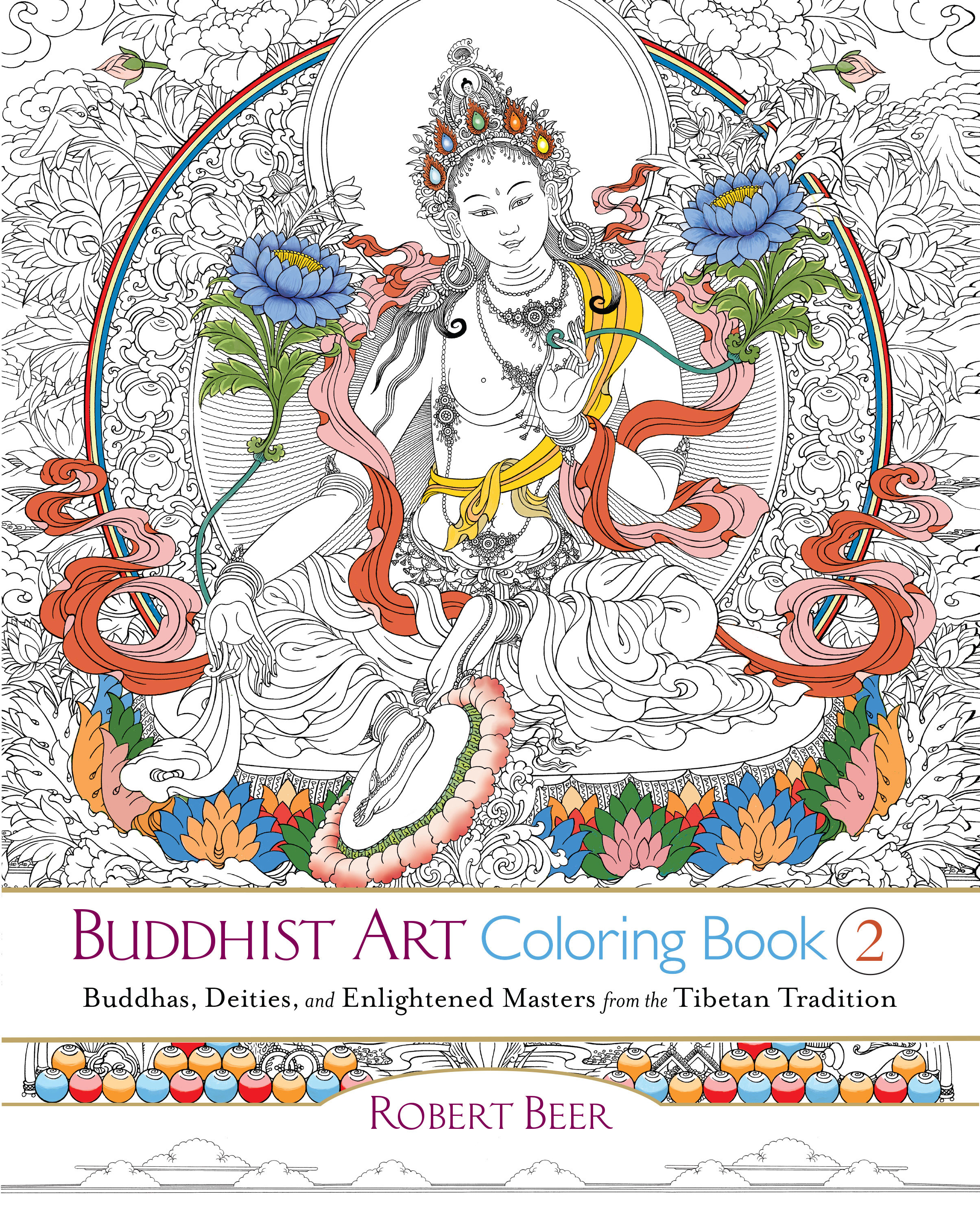Adult coloring books are in. Way, way in. Marketed as an anti-stress activity, the demand for adult coloring books has created an entirely new category of book publishing, with titles like The Mindfulness Coloring Book: Anti-stress Art Therapy for Busy People and Color Me Thin—Mindful Weight Loss. (There’s even an official coloring book for the TV show Game of Thrones.)
Robert Beer is the author and illustrator of The Encyclopedia of Tibetan Symbols and Motifs, the first comprehensive reference book to the symbols found in Tibetan line drawings, paintings, and ritual objects, and the first in English to examine the symbolism and iconography of Tibetan Vajrayana Buddhism. Beer recently published two Buddhist coloring books using never-before-seen images drawn over the course of 30 years. The first book presents symbols and motifs from the Tibetan Buddhist tradition while the second focuses on traditional Buddhas, deities, and enlightened masters. He spoke with Tricycle recently about the drawings’ religious symbolism and the physical toll that decades of brushwork have taken on his hands.
–Marie Scarles, Editorial Assistant

How did this project arise? I had no knowledge of the coloring book phenomena until last June. My partner, Gill Farrer-Halls, got the Saturday Guardian newspaper and pointed out that from the top ten non-fiction bestsellers, six were coloring books. I looked online and realized there was this craze of mindfulness connected with coloring for adults! People find that they can turn their mobile phone off, turn their laptop off, turn their TV off, and sit down and spend an hour or two coloring in an image.
What does it mean to have Westerners, particularly if they are unfamiliar with Buddhist religious symbolism, interacting with these sacred images? I think that it will depend on the individual. In the West, there’s an interest in spirituality across the whole spectrum. Some people would pick up the book and identify with the spiritual elements of Tibetan Buddhism; then they could learn something. At the back of both books, there are thumbnail images and 150-word texts that describe the symbols and their history. There are brief histories of the lineage holders in the back of the second book as well.
When you spend time patiently working on something—when you spend hundreds and hundreds of hours coloring in or making drawings like I’ve done—it certainly has an effect on the mind. In that sense, I think the act of coloring has great authenticity as being connected with some spiritual, meditative state. The images themselves convey certain qualities; the deities themselves represent certain energy qualities. I think people are attracted to this kind of sacred imagery.
You write in the introduction of your second book that the collection includes some of the finest drawings you’ve ever done. You list Green Tara [the Buddha of enlightened activity], White Tara [known for compassion, healing, and serenity], and Padmasambhava [also known as Guru Rinpoche, an 8th-century Indian Buddhist master credited with bringing Buddhism to Tibet] in particular. It’s clear from looking at them that they’re very complex. What else makes them special? It’s not only those three. Milarepa [one of Tibet’s most famous yogis] too, and a few others I drew, I spent a long time on. I remember I drew Green Tara and Red Tara in Scotland back in the late nineties. I might have spent six weeks on the two of them. Every day I would work on those two. They took a long time to draw, mainly because you have to compose the drawing, which is lightly drawn in pencil, before the brushwork goes on. And then afterward, I erased the pencil and went over the drawing again with a brush because some of the ink gets erased when you’re taking the pencil marks off. When these drawings are finished, it’s like they have a life beyond their mechanical reproduction. In a sense they cover a stillness that, to me, is something that I’m not the author of. The author is stillness itself.
Have you colored in your own images yet? I got myself a box of Sharpie pens and they’re sitting unopened. I haven’t actually done any coloring myself.
Why not? Although this question sounds like a small one, it’s actually quite a big answer. I’ve lost most of the feeling in my right hand through handwriting thousands of letters to people who contacted me with questions before the advent of email. Then there was all the drawing and painting, every day at the drawing board for around 30 years, and in between I was always creating things with my hands. To be quite honest I can no longer draw or write with a pen. My right hand is extremely damaged. Even signing my signature is very difficult. My partner writes all the Christmas cards and the addresses—I just sign them. I have to type with one finger as well. So I haven’t drawn for many, many years—probably about 15—mainly because of repetitive strain injury, and the Sharpie pens I bought are still in their box!
If I were to color one of my drawings in, it would look like the Padmasambhva image above, which was actually painted by an Indian painter in Jaipur based on my instructions.
Buddhist Art Coloring Book 1 and 2 are available from Shambhala Publications.
Color your own Yeshe Tsogyal and Padmasambhava from Beer’s Buddhist Art Coloring Book 2
Thank you for subscribing to Tricycle! As a nonprofit, we depend on readers like you to keep Buddhist teachings and practices widely available.